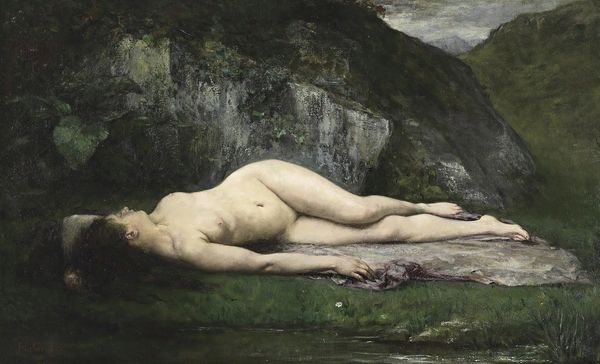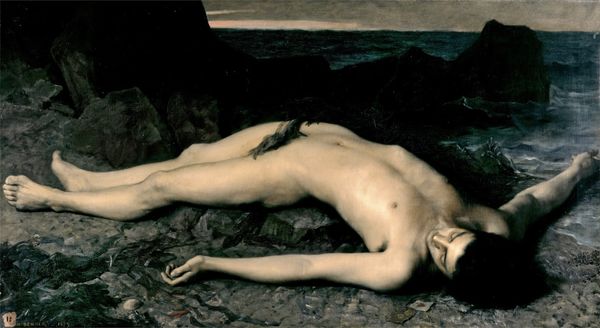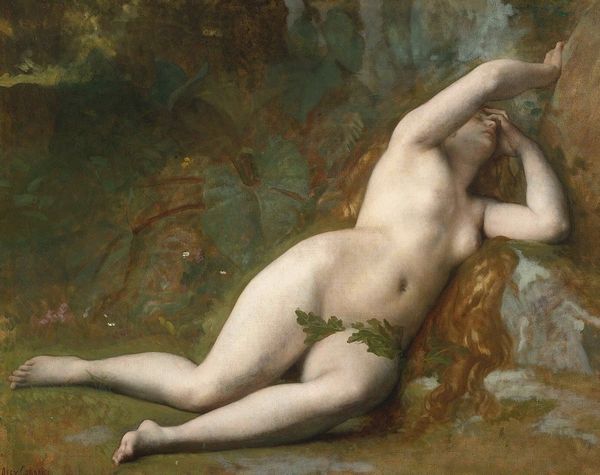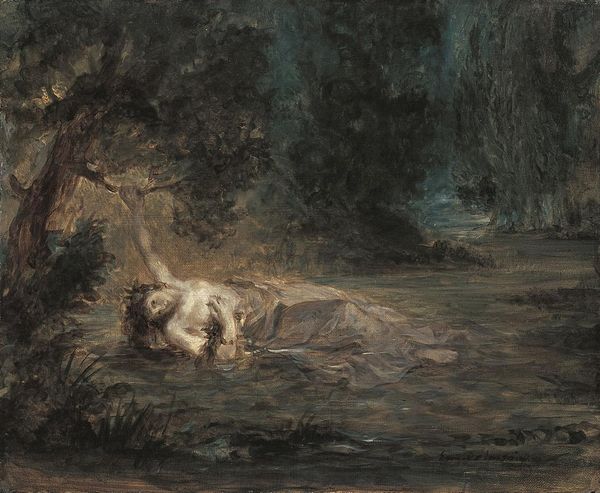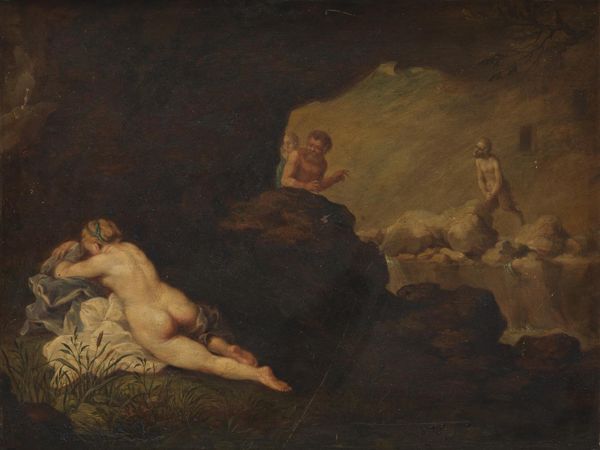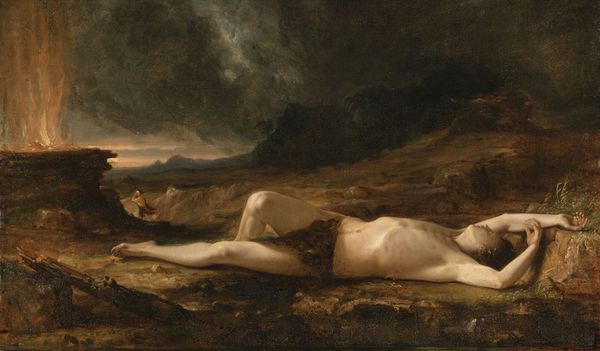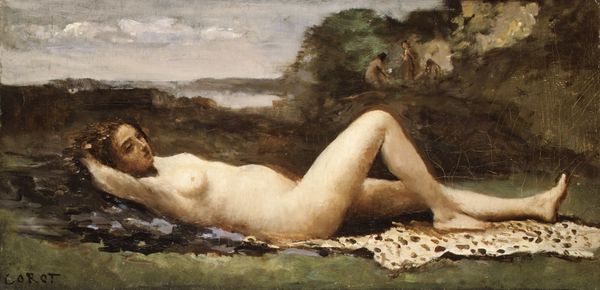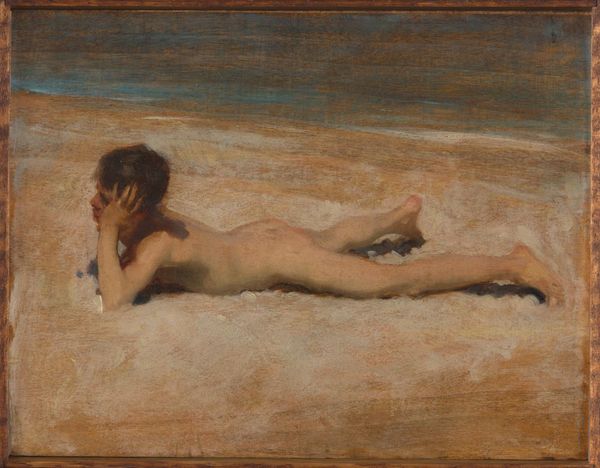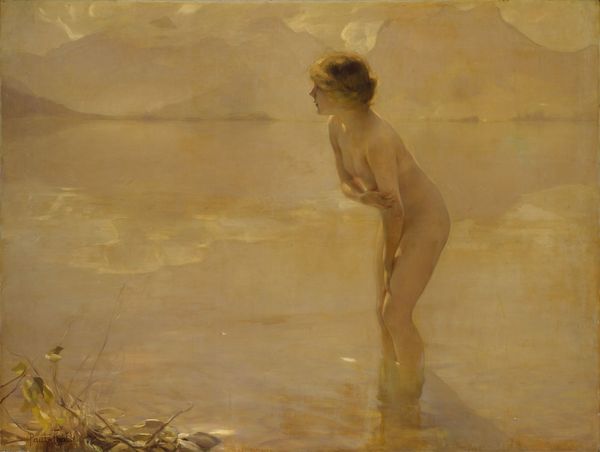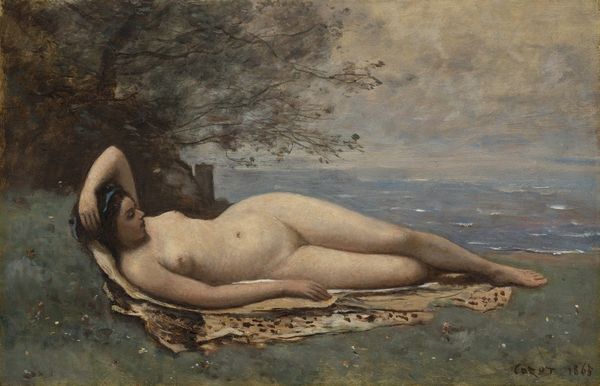
Copyright: Public domain
Curator: Victor Meirelles painted this canvas, titled "Moema", in 1866. It's oil on canvas. Editor: What strikes me first is this intense serenity, even in what seems to be a final moment. There's such a quiet drama playing out here between the figure and the vast landscape. Curator: Absolutely. Meirelles draws on a tragic episode from Basílio da Gama's epic poem "O Uraguai," a pivotal text in Brazilian Romanticism that's heavy with both classical tropes and Indigenous themes. Moema, an Indigenous woman, throws herself into the ocean after Diogo, a colonizer she loves, as he departs. She’s carried back to shore, only to die. Editor: Right, the narrative paints this potent mix of longing and desperation. You can sense it radiating from her form. It's a story of doomed love, told with a sort of hushed reverence, isn't it? How do you see the composition serving the themes? Curator: The positioning of Moema parallel to the shoreline amplifies this sense of a final, gentle arrival. She's both returned to the land and departing from it simultaneously, her figure acting as a bridge. Note, too, the soft, muted color palette. While romanticized, there’s no glorious heroic death, rather an acceptance that leans into the fatalism of the tale itself. It invites viewers into a meditation on cultural collision and loss. Editor: It also echoes the tradition of reclining nudes but within this very specific Brazilian narrative and setting, creating interesting tensions between European art history and its reinterpretation here. Curator: Precisely. Meirelles' painting, while clearly drawing from European Romanticism, inserts itself into the formation of a unique national narrative. Moema becomes this mythologized, almost allegorical figure of Indigenous sacrifice in the face of colonization. It reflects the historical power dynamics while aiming for an aesthetic experience loaded with emotional gravitas. Editor: So, in essence, this isn't simply a depiction of a single tragic moment but a powerful meditation on national identity being forged through narratives of love, loss, and the echoes of colonial encounter? Curator: I would agree completely. And considering it now, one is compelled to ponder how those visual tropes and narratives influence our collective memory and representation of history to this very day. Editor: I walk away now, struck by the quiet power this painting still possesses, lingering between romantic lament and socio-historical reckoning.
Comments
No comments
Be the first to comment and join the conversation on the ultimate creative platform.

